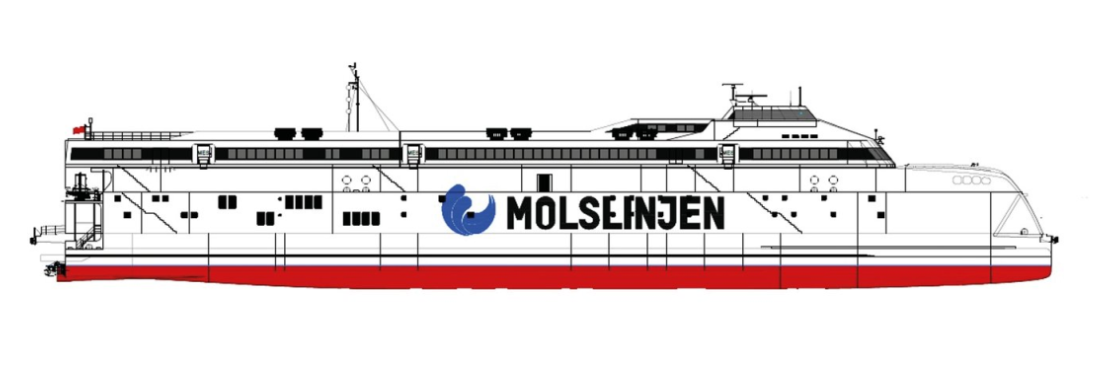On July 22, Danish ferry operator Molslinjen announced on its official website that its parent company, Nordic Ferry Infrastructure, has placed an order for two battery-powered giant catamarans for the Kattegat. With this, Molslinjen kicks off the world’s largest electrification project at sea. Australian Incat will build the ferries, which together with another third ferry are expected to arrive in Denmark during 2027 and 2028.

The owners behind Molslinjen, Nordic Ferry Infrastructure, have just placed a billion-kroner order for two battery-powered giant catamarans for Molslinjen’s route across the Kattegat. The two catamarans will be built at the Australian shipyard, Incat, in Tasmania, where several of Molslinjen’s current fast ferries are also built.
Work is also underway on a third ferry, and dialogue is underway with several different shipyards, which are expected to be able to handle the task of building a battery-powered giant catamaran similar to the other two. If it ends up with three ferries, the Kattegat route will be the world’s largest electrification project at sea ever. The first of the three ferries is expected to arrive in Danish waters at the turn of the year 2027-2028.
The three ferries will be 129 meters long, 30.5 meters wide, and there will be room for 1,483 passengers and 500 cars. This is 11 percent larger than Bornholmslinjen’s Express 5, which is considered the world’s largest catamaran in terms of number of cars. At the same time, this means that the total capacity for cars and passengers in the Kattegat will increase by more than 25 percent.
Each of the three ferries will be equipped with battery packs that, with 45,000 kWh, can propel the ferries at up to +40 knots – the same as +74 kilometers per hour.
The construction of the three ferries and associated infrastructure ashore will cost in the region of DKK 3.5 billion.
Molslinjen’s fast ferries were specifically mentioned in the green tax reform, which is a number of political initiatives aimed at reducing Denmark’s emissions of greenhouse gases and promoting the green transition.
Therefore, Molslinjen has just applied for the state’s green support pool for the electrification of the Kattegat operation. The possibility of support from the state has made the shipping company press the order button.
The ferries must be able to charge in the ports of both Aarhus and Sjællands Odde. When one of the new catamarans is connected to the charging socket, the ferry will charge with 15 kV AC, 55,000 kW for 30 minutes. This corresponds to an average of 25,000 kWh of energy received before the next trip.
This is equivalent to an electric car being sent on a 150,000-kilometre journey on a single charge.


